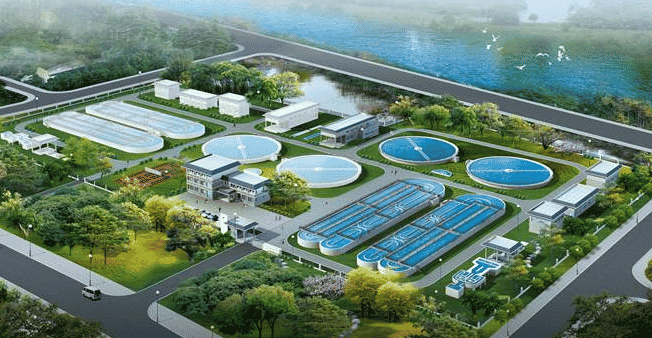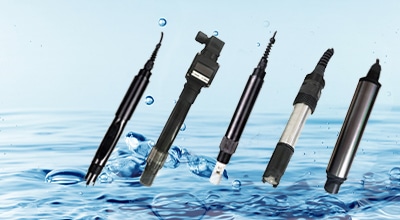What is municipal water?
Municipal water supply is water supplied by water companies. Municipal water is supplied to industry and households through underground pipes.
The municipal water supply system is an integral part of the utility. A municipal water supply system usually consists of a water source, a transmission pipeline, a water plant and a distribution network. Water is taken from the water source and sent through the aqueduct to the water plant for water quality treatment to ensure it meets the drinking water standards set by the Environmental Protection Agency. The treated water is pressurized and sent to customers through the distribution network.

Municipal water supply systems are systems consisting of various types of structures and transmission and distribution networks that guarantee water to urban residents, industrial enterprises, etc. According to the nature of the system, it can be classified as follows.
- According to the type of water source, it is divided into surface water (rivers, lakes, reservoirs, oceans, etc.) water supply system and groundwater (wells, springs, etc.) water supply system.
- According to the mode of water supply, divided into self-flow (gravity) water supply system, pump (pressure) water supply system and mixed water supply system.
- According to the purpose of use, divided into domestic water supply system, production water supply system and fire water supply system.
- According to the service object, divided into urban water supply system and industrial water supply system.
Although municipal water is fully treated before being delivered to customers, and the Environmental Protection Agency has set water quality standards that each municipality must meet, the quality of tap water can actually vary from community to community. The water quality standards set by the EPA take into account a variety of different contaminants. However, some communities use efficient water treatment methods that remove 99% of contaminants, resulting in very clean and healthy drinking water. On the other hand, some towns can only meet the minimum requirements, which can have an adverse effect on the taste of the water and how healthy it is to drink.
Although municipal water is not as healthy as purified or filtered water, it is usually safe to drink. However, there can be certain contaminants in the water that can increase your risk of certain health conditions and diseases. Because a few municipalities still deliver tap water through lead pipes, this can cause serious damage to a person’s health.
Is municipal water safe for drinking?
Generally speaking, it is still healthier to drink municipal water. Municipalities must treat and test the water before providing it to homeowners and businesses. If it does not meet local standards, the water needs to be treated again until a certain amount of contaminants are removed from the water.
Because this water needs to be treated before it can be distributed to homes and businesses, it is safe for you to drink. On the other hand, using a filter or purification system can help make your water healthier while removing almost all contaminants. While tap water is usually safe to drink, it’s important to understand that even after treatment, water can become contaminated. While municipal water is usually contaminated when it exists as a source of water before treatment, contamination can occur within the distribution system that occurs after the water has been treated.
The many different contaminants that can affect municipal water include
- Natural minerals and chemicals
- Pesticides
- Fertilizers
- Wastewater discharges
- Sewer overflows
- Various manufacturing processes
If the water contains too many contaminants when you drink it, you may be at increased risk for health conditions such as
- Reproductive problems
- Neurological disorders
- Gastrointestinal problems
- Cardiovascular disease
The elderly, pregnant women, young children, infants and people with weakened immune systems are particularly vulnerable to these health problems. Municipal water is treated to ensure that the concentration of contaminants in the water is below a certain level. If the water is not treated, people in local communities can become ill when they drink it. The process of treating municipal water is relatively simple but very important.
What does the municipal water treatment process look like?

There are a variety of processes used to treat municipal water, which include everything from UV disinfection optimization to reverse osmosis. The specific approach depends greatly on the level of contamination in the water. If significant contamination is present, municipalities may need to consider a reverse osmosis process.
Although the water treatment process may vary greatly from municipality to municipality, the general steps of the water treatment process include
- Municipalities can treat up to 65 million gallons of water per day
- 30 MGD would be pumped into large injection wells to create a seawater intrusion barrier
- The remaining water will be pumped into infiltration ponds near the city to manage stormwater runoff
- Water is treated by advanced water treatment methods such as reverse osmosis, UV disinfection optimization, wastewater chlorination, and wastewater recycling
- Once the water is treated in the wastewater treatment facility, it is disinfected with a round of chlorine before being made available to businesses and homeowners
- A facility capable of treating 65 MGD of water per day should be able to meet the water needs of approximately 450,000-550,000 residents
The primary goal of municipal water treatment is to ensure that the quality of the water meets EPA standards for the many different contaminants in the water. If applied properly, the amount of contaminants and the potential for waterborne illness will be at an acceptable level. The water must also be free of certain pathogens that may be hazardous to public health.
Municipal water treatment applications
Municipal water is treated to ensure that it is clean and healthy enough to be delivered to rural, suburban and urban populations. The types of water sources treated include surface water and groundwater. While a significant amount of water is sent to homes after treatment, local businesses and plants can also use this water for a variety of manufacturing processes.
Major applications for municipal water reprocessing include
- Drinking
- Bathing
- Cooking
- Cleaning
- Flushing toilets
- Watering lawns and gardens
Apure’s municipal water treatment sensors

At Apure, you can use a variety of important water treatment sensors to test the quality of your water and ensure that contaminants are at the correct level.
The main sensors you can use include:
pH Sensors – These sensors allow you to ensure that the water is not too alkaline or too acidic, which can help you identify the efficacy of the disinfectant
Redox Potential Sensors – These sensors are used to indicate the disinfection of water
Dissolved oxygen sensors – DO oxygen control is very important, first of all, to ensure that there is enough dissolved oxygen in the water, so that aerobic microorganisms can work properly, which is a prerequisite for achieving better operating results. However, if too much oxygen is charged, it will cause waste and lead to increased operating costs.
Chlorine sensors – These sensors measure the concentration of chlorine in PPM, you may prefer the mV measurement provided by the ORP sensor
Ammonia Nitrogen Sensor – Organic nitrogen is a water quality index reflecting the total amount of nitrogen-containing organic compounds such as protein, amino acid and urea.
Chemical Oxygen Demand Sensors – Chemical oxygen demand (COD) is often used as an indicator of how much organic material is in the water
Nitrate Sensors – Continuous monitoring of nitrate concentration values dissolved in water, suitable for monitoring wastewater aeration basins and controlling denitrification processes
Fluoride Sensors – Fluorine is one of the essential trace elements for human body. The appropriate fluorine content in drinking water is 0.5-1.0mg/L. If the fluorine content is too low, it is easy to suffer from dental caries. If the fluoride content is too high, children may develop dental fluorosis.
Summary
Whether you work at a treatment facility or are concerned about the quality of your drinking water, municipal water treatment is critical to ensuring that the public remains healthy. The presence of too many contaminants in water increases the likelihood of a variety of adverse health conditions and diseases. By implementing the right treatment process, municipal water should be free of most contaminants, which will allow you to use the water without worrying about negative impacts. The only way to provide safe drinking water to rural, suburban, and urban populations is to first treat it in a municipal water supply facility.
At Apure, we can provide you with all the sensors and controllers you need to accurately measure the amount of water. Whether you want to measure the current contaminants in your water or determine the effectiveness of your treatment method, Apure offers pH, ORP, dissolved oxygen, residual chlorine, and turbidity sensors to help you identify the quality of your water.
Additional articles on water treatment:
Nitrate in water quality
Ammonia in water treatment
Solution of water pollution
Why is water quality important?
